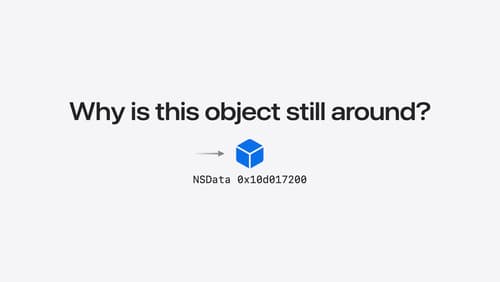Tell me how to debug memory leaks
Asked on 2025-09-12
1 search
To debug memory leaks, you can use several tools and techniques as discussed in the Analyze heap memory session at WWDC 2024. Here are some key points:
-
Xcode's Memory Graph Debugger: This tool captures memory graphs, which are snapshots of all allocations and the references between them. It helps identify why certain allocations still exist in your app's heap.
-
Instruments Application: Use the Allocations and Leaks instruments to track memory usage over time. The Allocations instrument records the history of all allocation and free events, while the Leaks instrument takes periodic snapshots to detect memory leaks.
-
Command Line Tools: Xcode includes command line tools like
leaks,heap,vmmap, andmalloc_historyfor analyzing memory usage in macOS and simulator processes. -
Reachability Analysis: Ensure that all memory in your program is reachable through non-weak references. Unreachable memory is considered leaked and should be addressed by fixing reference cycles or removing accidental references.
-
Resolving Reference Cycles: For most leaks, the goal is to find and fix one reference in a cycle, which might involve changing an ownership qualifier from strong to weak or unowned.
For more detailed guidance, you can refer to the chapter on Reachability and ensuring memory is deallocated appropriately in the session.

